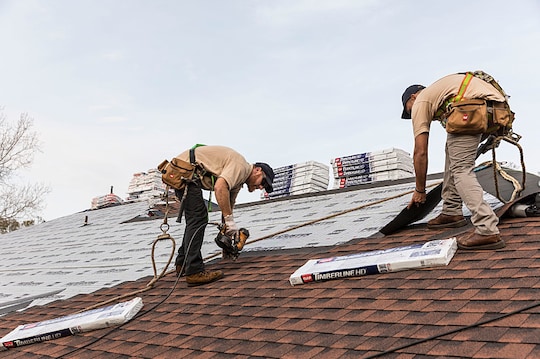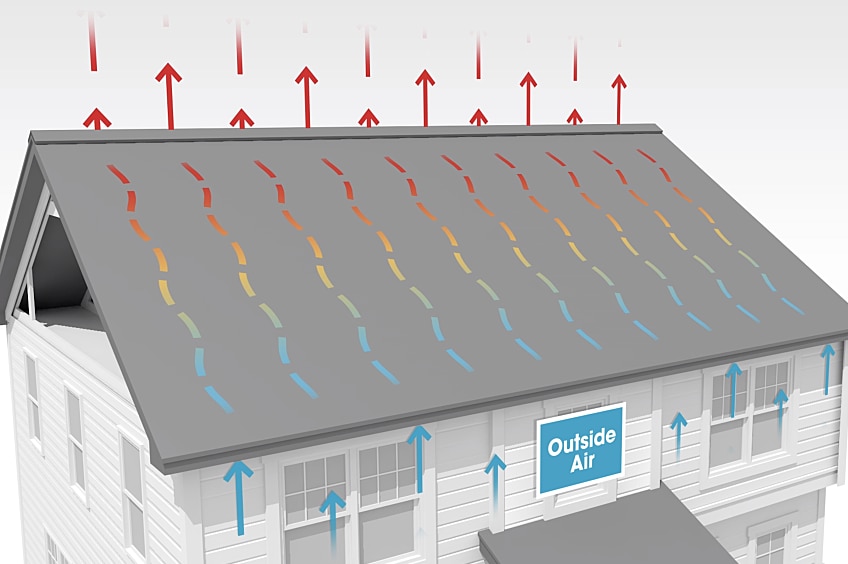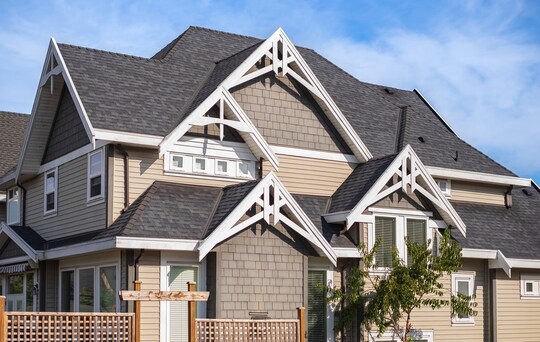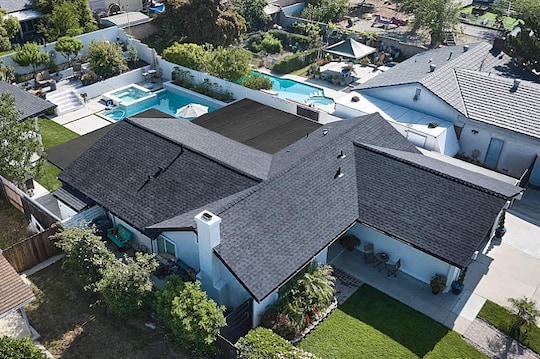
Es posible que no tengas en cuenta automáticamente la ventilación para el ático y para el techo al reemplazar el sistema de techo de tu vivienda. Sin embargo, es una parte esencial del proceso. Este es el motivo por el que la ventilación para techo es importante y el papel que puede tener una ventilación correcta para ático en tu sistema de techo.
The Importance of Proper Attic Ventilation
Your home generates moisture every day: cooking, showering, and even normal breathing all create moisture that can find its way up to your attic. Without proper attic ventilation, that moisture has nowhere to go. Once trapped, it can damage your interior spaces and reduce the effectiveness of your attic insulation. It can even contribute to the overall deterioration of your roof system and structural supports over time.
Ventilating your attic space allows that interior moisture, along with hot air, to be exhausted near the top of the roof through ridge vents, roof louvers, powered vents, or other exhaust vents. Fresh air can also enter the attic along the soffits and eaves. This is referred to as intake ventilation. In order for that moisture and heat to escape through the exhaust vents, fresh, cooler air must be allowed to enter the lowest portion of the attic, at or near the soffits or overhangs.
The key to effectively ventilating your attic lies not only in ensuring you have enough attic ventilation for your particular home, but finding the proper balance of intake versus exhaust ventilation. The U.S. Housing Authority recommends a minimum of at least 1 square foot of attic ventilation, evenly split between intake and exhaust, for every 300 square feet of attic floor space. This involves a bit of math, so the experts at GAF have developed a simple-to-use ventilation calculator tool to help you figure out the proper amount of ventilation. Be sure to consult your local building codes for attic ventilation requirements or ask your roofing contractor.
Benefits of Proper Attic Ventilation
Though they may vary depending on your area and the season, there are some significant benefits to having a well-ventilated attic.
- Helps lower attic temperature. Proper attic ventilation supports a strong roof system. A balanced and effective attic ventilation system helps exhaust superheated air from the attic, which could save your air-conditioning system from having to work as hard in the summer.
- Reduces the risk of ice dams. In colder climates, proper ventilation can help prevent ice damming. Allowing cold winter air to pass through the attic keeps your roof's temperature cooler, and helps prevent the cycle of snow melting and refreezing that can cause damaging ice dams.
- Helps protect your roof system. Heat and moisture buildup can add stress to the shingles and other parts of your roof system, potentially causing premature deterioration. A balanced* and effective attic ventilation system allows cooler, fresh air to enter the attic, forcing out superheated air, which helps protect your roofing system.
What to Ask Your Roofing Contractor
Most contractors today are installing some type of attic ventilation, but in some cases, they may not be installing the proper amount for the job or they may only be installing exhaust vents, such as a ridge vent. In other cases, they may simply not be installing enough to meet the necessary balance between the two-intake and exhaust. There isn't one universal solution, as every home is designed and built differently.
Here are some questions to ask your contractor about your roof ventilation.
- Based on the size of my attic space, do I currently have enough ventilation?
- Do I have both exhaust ventilation at or near the ridge of my roof, and intake ventilation at or near the overhang/soffit area?
- Is there enough ridgeline on my roof to install the right amount of exhaust ventilation? If not, what other types of exhaust vents do you recommend (i.e., power vents or roof louvers) to provide the needed amount of exhaust ventilation?
- Are my existing overhang/soffit vents clogged by paint or covered with attic insulation?
- If I don't have any intake ventilation or enough ventilation at my overhang/soffit area, can it be added?
- Would you mind looking at my attic insulation? Is it in good condition, and does it properly cover the entire attic floor?
If you're in need of roof repairs or replacement, reach out to a contractor certified by GAF ** in your area. Be sure to ask about proper ventilation and the options available to ensure that your roofing system will deliver the best performance and protection for your home.
*Always have a balanced attic ventilation system. En ningún caso la cantidad de ventilación de escape en o cerca del caballete debe superar la cantidad de ventilación de entrada en o cerca del sofito. See www.gaf.com/ventcalcalculator for details.
**Contractors enrolled in GAF certification programs are not employees or agents of GAF, and GAF does not control or otherwise supervise these independent businesses. Los contratistas pueden recibir beneficios, como puntos y descuentos de recompensa por lealtad en herramientas de comercialización de GAF por participar en el programa y ofrecer a GAF garantías mejoradas, que requieren el uso de una cantidad mínima de productos de GAF.






